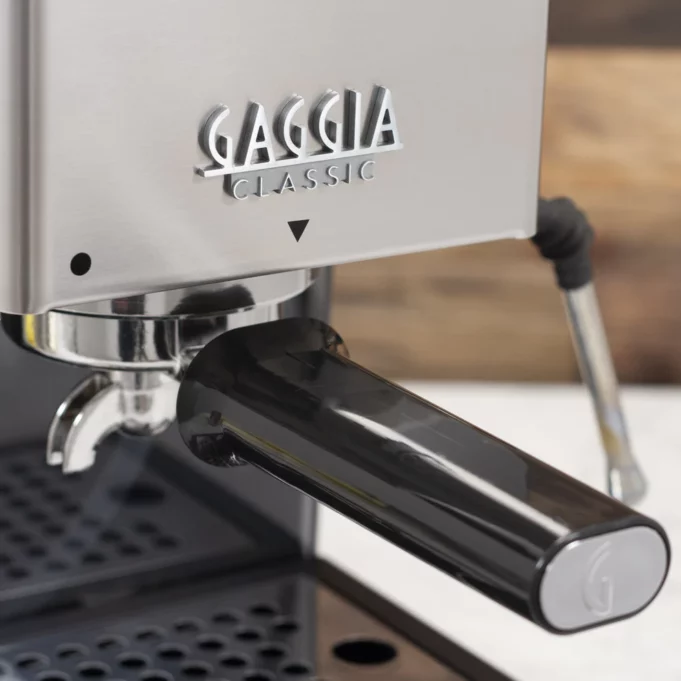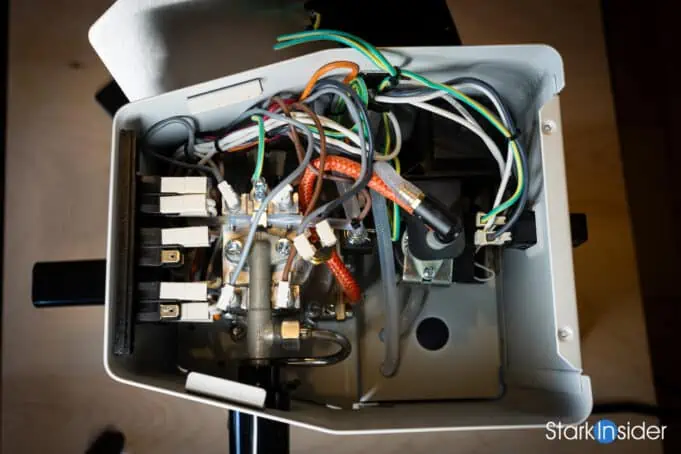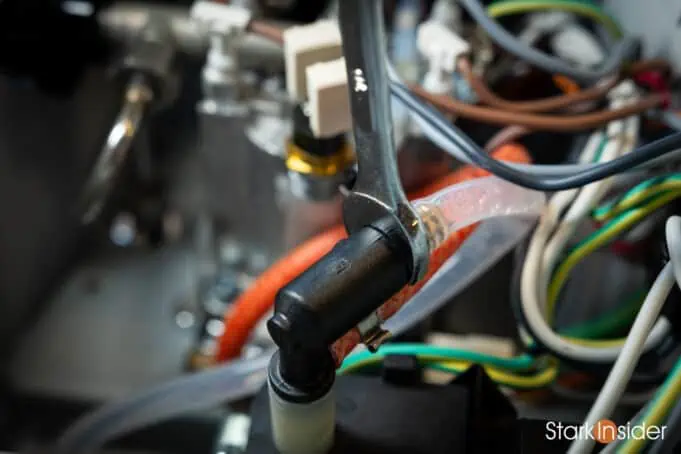It’s real, and it’s now shipping.
Gaggia has once again updated its iconic Classic Pro espresso machine, the first since it was retooled in 2019.
Called the Gaggia Classic Evo Pro the new model costs a little more than the standard one, but includes several updates that the company say are based on feedback from baristas.
Here’s a summary of what’s new with the Classic Evo Pro:
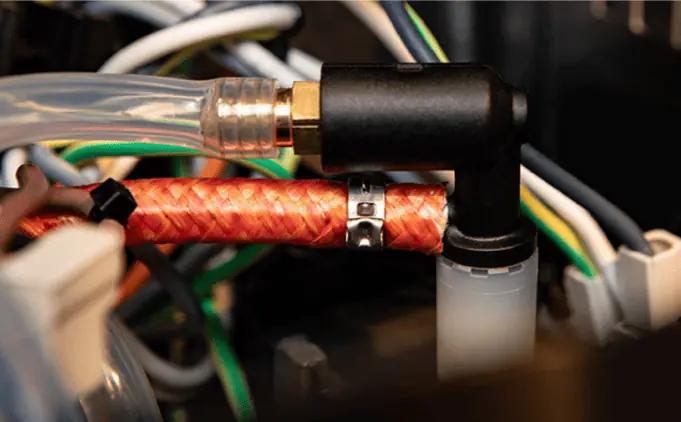
- 9-bar OPV
- New polished stainless steel 58mm portafilter (vs. chrome-plated brass)
- New polished steel cover for the brew group
- New anti-scale food safe boiler coating
- Updated mounting plate to secure the pump and boiler to reduce vibration noise
Everything else remains the same, including the dimensions, three-way solenoid, rocker switch controls, drip tray, pressure relief valve stem, steam wand, and exterior finish. Like the Classic Pro, the Evo is also made in Italy.
Gaggia has priced the Classic Evo Pro at $499 which is $100 more (or 25%) than the now base level Classic Pro.
Thought on the 2023 Gaggia Classic Evo Pro
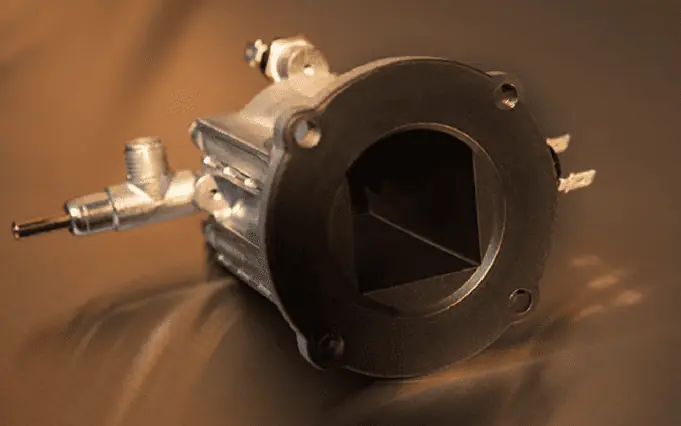
Well, first of all: hurray! Serious fans of this legendary single boiler espresso machine no longer need to do the 9-bar mod when first unboxing. This was one of the most — if not the most — popular mode among the DIY espresso community. Thankfully, having it come from the factory with the OPV set to the industry standard 9-bar means customer no longer need to flirt with the possibility of voiding the warranty.
STARK INSIDER ESPRESSO
Thanks Gaggia!
Classic Evo Pro: No more DIY 9-bar mod like this is required
But, why 9-bar?
9-bar is what most commercial espresso machines use to brew. Studies have demonstrated this is the ideal pressure for extraction and results in the best flavor, consistency and crema for most beans. From what I can tell, the original Classic Pro was set at around 12-bar which is helpful when using a pressurized basket. However, most home enthusiasts prefer the classic pressure of 9-bar, and swap out the factory OPV spring to improve extraction. The mod is easy. It took me about 10 minutes on my Classic Pro. Now it’s obviously no longer necessary if you opt for the 2023 edition.
As for all the other updates I’m impressed. Gaggia does seem intent on regularly improving the Classic. I’d bet that no other model perhaps save for the Rancilio Sylvia, which might come close, has gone through as many iterations over the last several decades. Really nice to see a vendor committed to such high standards of R&D and market research on a product.

Other new updates like the boiler anti-scale coating are most welcome. Many long-time Gaggia owners have had to disassemble the machine and remove the boiler to give it a proper cleaning after years of operation. Hopefully this will no longer be needed — though time will tell.
I’ve never had a problem with the current portafilter included with the Classic (aside, perhaps, from the lightweight feeling handle), but it’s nice to also see improvement here with the polished stainless steel.
Finally, we’ll have to wait for the reviews to see how much noise reduction the updated mounting plate provides. In our tests the Gaggia Classic Pro actually has performed well when it comes to noise. Compared to Heat Exchangers (HX) it was actually much quieter. In fact, about the only noise we could detect was when the pump was running during the brew process or when using the steam wand. Otherwise, no weird clicks or other sounds that detract from the experience.
All told this is an exciting new/updated espresso machine for 2023.
Espresso on Stark Insider
- Are ESE espresso pods worth it? We test Illy pods on a Gaggia Classic Pro to find out
- First Look: Is the Gaggia Classic Pro espresso machine still worth it in 2023?
- Jura Z10 Review: The absolute best super-automatic espresso machine for home or office
- First Look: Breville Barista Touch Impress Espresso Machine – an automated barista for the home
- Espresso Machine Showdown: Profitec GO vs. Ascaso Steel Uno
- TIMEMORE Digital Scale: Can it help dial in your espresso workflow?
In terms of available colors, aside from the stainless steel version seen in the above photos you can also buy the new Gaggia Classic Evo Pro in: Thunder Black; Cherry Red; Polar White; Classic Blue; Industrial Grey; and Lobster Red. Note that choosing one of these optional colors adds $50 to the price.
I’m still amazed that Gaggia can sell this thing for under $500, or just right under. It’s a lot of machine for not much money given its professional-grade specs.
The next cheapest alternative in this entry level, single boiler espresso machine market would likely be its famed competitor in the Rancilio Sylvia. But the Sylvia starts at $865 which is a considerable jump in price. And I’d just assume go with the new Gaggia Classic Evo Pro. The value proposition is off the charts in the world of professional espresso machines.
Photos: Courtesy Whole Latte Love (aside from the 9-bar OPV Stark Insider photos).

